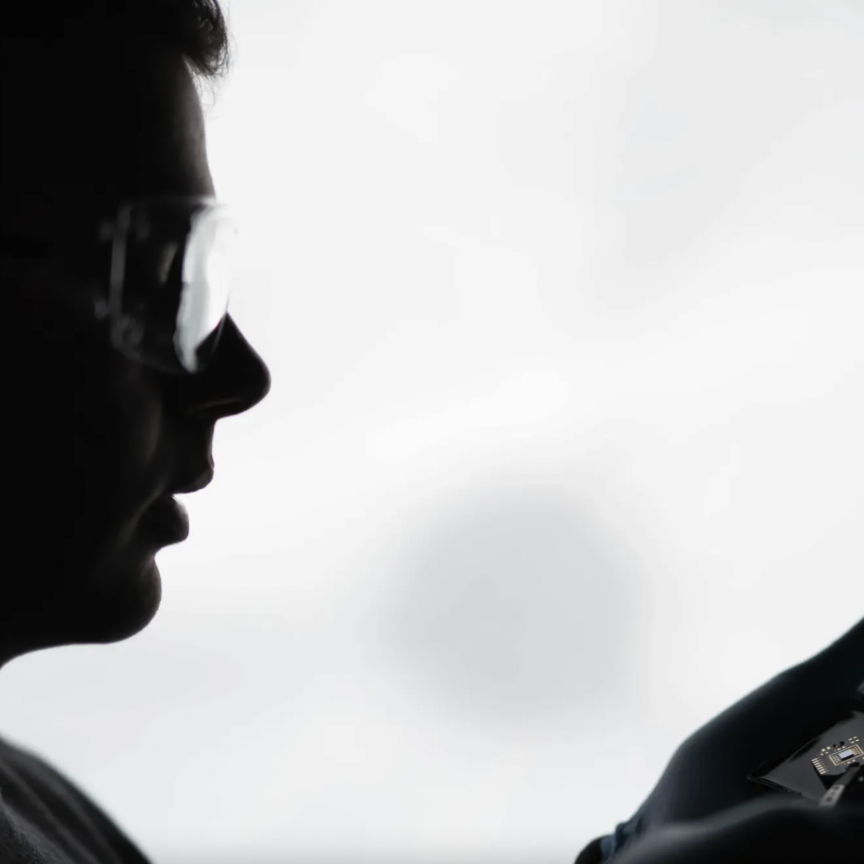Free-space optical communication technology uses light to transmit data in a similar way to any other optical communication technology. The big difference is that it does not use a fibre optic cable. Instead, light propagating in free-space is harnessed to wirelessly transmit data for telecommunications or computer networking.
This “free-space" is a term that can refer to outer space, air, a vacuum, or similar. The first example is one which has helped to push free-space optical communications to the forefront of people’s minds in recent years – and not just in the scientific and technological community.
Investments from well known names have hit the mainstream media, with Elon Musk making big news thanks to the launch of the Starlink internet network, under the SpaceX brand in 2020. The company recently announced that it now has thousands of satellites in space, and has surpassed a million active users across the world.
Likewise, consumer electronics giant, Sony Corporation of America (SCA) revealed last year that it had formed a new company, Sony Space Communications Corporation (SSC), to conduct space optical communications. The aim of the new organisation is to increase the amount of communications in space and realise an internet communications network covering the earth, space, and applications such as real-time services.
Free-space challenges
Free-space optical communications have become widely recognised as an alternative solution to fibre optic networks in more remote places that are difficult to serve with traditional networks. But there are a number of factors for designers, builders and operators of free-space networks, as well as researchers and engineers, to consider. These include but are not limited to, the large range of wavelength domains that can be used, and the type of light source. There are also challenges to overcome.
Jeremiah Hashley, a technical writer with Wavelength Electronics, explains: “The main challenge regarding free-space communication is transmission. If the light from the optical source is quickly attenuated or scattered in the air or atmosphere, it can’t transmit data for long distances and may not be reliable.”
A potential solution, according to Hashley, is to use long wave infrared (LWIR) quantum cascade lasers (QCLs) as optical sources. He says: “With free-space communication using QCLs, only the source and detector are needed for data transmission – no physical connection is needed. QCLs have low-attenuation and low-scattering properties that are crucial for sending light through free-space.”
The reason for this is that QCLs use cascade intersub-band transitions in quantum wells and heterostructure lattices to emit wavelengths ranging from mid-IR to far-IR. Hashley elaborates: “This design is practical for high-speed direct modulation for better data transmission to a detector through free-space. Because the output of QCLs can reach up to several watts, they can be utilised as primary optical sources for this type of application. The low electrical consumption is also ideal. QCLs are perfect for free-space communication as they emit in the long-wave infrared (LWIR) domain. The QCL, specific to this research, emitted light at 8.1µm at room temperature for low-attenuation and low-scattering behaviour.”
Case study: A new approach
A team of researchers recently demonstrated the potential for QCLs as the optical source for free-space communication transmission. The team, from the Institut Polytechnique de Paris, France; Beijing, China; and New Mexico, USA experimented with live video broadcasting at different levels of video formats, and realised free-space live video broadcasting thanks to a room temperature QCL with a wavelength of 8.1µm in the LWIR domain. They were able to demonstrate error-free results for two different video formats, offering proof-of-concept of a 1.485Gb/s data transmission without errors in the LWIR domain. “This design,” says Hashley, “shows promising results for applications in free-space optics and communication based on mid-infrared wavelengths using QCLs.”
The research team used a QCL driver from Wavelength Electronics, as Hashley explains: “Wavelength Electronics is one of the industry leaders in low-noise QCL current sources. The low noise from Wavelength’s QCL drivers can enable narrower linewidth, stable centre wavelength, and repeatable scans in any application. Wavelength’s QCL drivers can reach noise levels as low as 0.4 µA RMS (up to 100kHz). OEM modules or intuitive benchtop instruments are available. In this experiment, researchers used the QCL2000 LAB, a touchscreen instrument to drive current to the QCL used as the optical source.”
The QCL2000 LAB was leveraged to enable precise current control with minimal electronic noise from the QCL. Because the driver allows analog modulation of up to 2-3 MHz, the QCL was also able to emit a constant, uninterrupted signal that is subsequently modulated for communication purposes.
The team studied the transmission for several hours at a time, which demonstrated the long term stability of the driver. This was important to establish because the stability of the QCL bias current is critical in achieving consistent electrical bandwidth of the QCL. The driver from Wavelength is able to precisely deliver up to 2 A to the laser. In addition, the benchtop instrument exhibits noise performance of 1.3µA RMS up to 100 kHz with an average current noise density of 4 nA/√Hz.
The driver has a number of additional features, including an intuitive touchscreen interface, USB and Ethernet connections, rack mountability, and adjustable output current and compliance voltage, which mean that it can enable custom setup in any design. Meanwhile, brown-out, over-voltage, key switch, turn-on delay, and current ramp protect the user and the QCL from potential damage and electrical faults. The driver enables high-definition video broadcasting with a data rate of 1.485Gb/s with low noise and stable laser output. This makes the developed QCL system a reliable tool for real-field applications in free-space communication.
The research was a great example of how, with the right equipment and wavelengths, free-space communications can overcome some of the logistical barriers and infrastructure challenges of broadband connections in remote or rural areas. More detailed information about the research can be found in the latest White Paper from Wavelength Electronics.


